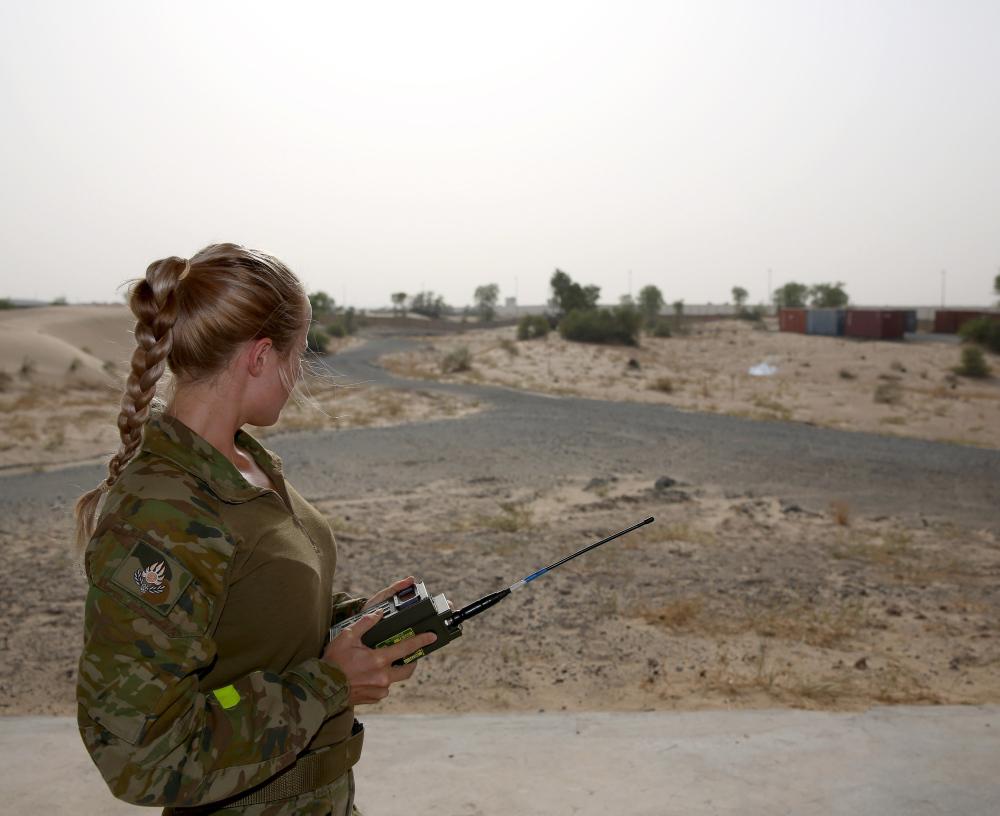
This article is part of a series on ‘Women, Peace and Security’ that The Strategist will publish over coming weeks in recognition of International Women’s Day 2017.
‘This is not just about equity but capability.’ That was the opening line of my speech to the Council of Colonels at the Headquarters of ‘Operation Resolute Support’ in Afghanistan in 2015.
As the Mission’s first Senior Gender Advisor, I knew that I’d face resistance to my work and that I’d have to prove to my military colleagues—predominantly men—why they should care about integrating women into the Afghan National Defence Security Forces (ANDSF). Moreover, I needed to show them that UNSCR 1325 on Women, Peace and Security wasn’t just a concept outlining a series of international humanitarian principles that they should adhere to, but rather, that it was something that could also contribute to the mission’s success.
There were some key lessons that I learnt from my experience as the ‘Resolute Support’ Gender Advisor that I’ve since applied to ADF operations. The first is that WPS applies to different nations in different ways depending on cultural imperatives. The second was the need to demonstrate to military planners how WPS can enhance operational effectiveness.
For example, in preparing for the Afghan fighting season, it was important for the military planners to understand that more women than combatants were being killed in Afghanistan every day, just because of their gender. In addition, women’s empowerment in Afghanistan countered the strategy of the Taliban which was deliberately targeting women in public positions and the security forces. As such, it made operational sense to enable 50% of the population to protect themselves and contribute to Afghanistan’s security.
I’d suggest that the ADF and Australian Army personnel in particular, are weary of women’s agendas in light of the necessary and significant cultural reform that has occurred through the ‘Pathway to Change’. In attempting to integrate WPS into ADF operations, I couldn’t ignore the largely negative perceptions surrounding the positive discrimination of women and I knew that I’d need to address these issues in its introduction. Regardless of the individual attitudes, it was clear to me that four things needed to be addressed to ensure the effective implementation of WPS into the planning and conduct of operations.
First, the two agendas—ADF internal cultural reform and the implementation of WPS on operations—needed to be separated. Second, the term ‘WPS’ needed to be replaced by ‘gender’ to be more inclusive of all vulnerable groups and actors within a deployed environment. Third, the ADF needed to be educated on the fact that ‘gender’ doesn’t mean ‘women,’ but rather, refers to the roles of men and women defined through socialisation and culture. And finally, the implementation of WPS within Defence isn’t just about equity but capability and enhancing operational effectiveness.
Over the past two years, purists to the WPS agenda have raised concerns with me about focusing the agenda on ‘gender’ rather than ‘women’, believing that it would lead to women’s issues in conflict continuing to be ignored. However, that hasn’t been the case in its practical application. In the majority of planning activities conducted by the ADF, policymakers have been able to gain a better understanding of human security issues within an operating environment. That understanding includes recognition of the correlation between the levels of violence against women within a particular society and the rates of lawlessness and escalating conflict. They’ve also recognised the cultural imperative for women’s participation in missions and the importance of identifying female leaders who can assist in resolving the violence within their communities as well as the conflict overall.
The ADF’s response to Tropical Cyclone Winston in Fiji in 2016 was an example of where the ADF was able to better understand how to respond to a crisis through engaging with local women’s groups and local women. Of note, there was an increase in the vulnerability of certain groups in the population—in particular, women and girls—and as such, Fijian female forces were allocated to some of the emergency shelters while the ADF and other agencies focused on assisting Fiji with the relief effort. The deployed Gender Advisors were also central to the integration of WPS on the operation through their subject matter expertise on the WPS agenda and ability to engage with the local population on gender related issues.
The ADF has made strong progress in implementing the WPS agenda within the past few years. However, that’s mainly due to the effort of a handful of Gender Advisors working for the ADF’s top brass. It could be argued that WPS would be more fully embraced by ADF members and better understood should it have been initially introduced into service as a capability with the necessary resources, training, doctrine and trained personnel.
Regardless of the challenges, we can’t just consider WPS as a concept to be admired by the military. After all, the agenda itself derived from military peacekeeping operations in the 1990s. We need to continue to strive to apply it practically and provide a safe and secure environment for everyone—including women.